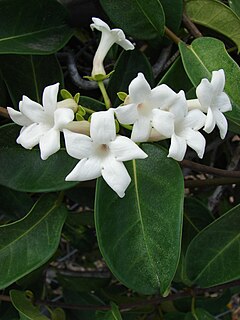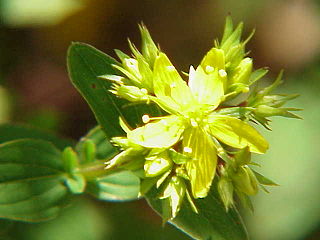
Zinnia is a genus of plants of the sunflower tribe within the daisy family. They are native to scrub and dry grassland in an area stretching from the Southwestern United States to South America, with a centre of diversity in Mexico. Members of the genus are notable for their solitary long-stemmed flowers that come in a variety of bright colors. The genus name honors German master botanist Johann Gottfried Zinn (1727–59).

According to APG II, the Asclepiadaceae, commonly known as milkweed family, is a former plant family now treated as a subfamily in the Apocynaceae.
Hentriacontane, also called untriacontane, is a solid, long-chain alkane hydrocarbon with the structural formula CH3(CH2)29CH3.

In biology, a rachis is a main axis or "shaft".
In biology, a homonym is a name for a taxon that is identical in spelling to another such name, that belongs to a different taxon.

"Jawaharlal Nehru Tropical Botanic Garden and Research Institute", renamed in the fond memory of visionary Prime Minister of India Shri Pandit Jawaharlal Nehru is an autonomous Institute established by the Government of Kerala on 17 November 1979 at Thiruvananthapuram, the capital city of Kerala. It functions under the umbrella of the Kerala State Council for Science, Technology and Environment (KSCSTE), Government of Kerala. The Royal Botanic Gardens (RBG), Kew played an exemplary and significant role in shaping and designing the lay out of the JNTBGRI garden in its formative stages.

Banksia elegans, commonly known as the elegant banksia, is a species of woody shrub that is endemic to a relatively small area of Western Australia. Reaching 4 m (13 ft) high, it is a suckering shrub that rarely reproduces by seed. The round to oval yellow flower spikes appear in spring and summer. Swiss botanist Carl Meissner described Banksia elegans in 1856. It is most closely related to the three species in the subgenus Isostylis.
Gymnema lactiferum, the Ceylon cow-tree or Ceylon cow plant, is a species of climbing perennial shrub native to India and Sri Lanka. In Sanskrit it is called ksirakakoli. James Emerson Tennent described the use of the plant in his account of Ceylon, and wrote it was "evidently a form of the G. sylvestre". The milky juice of this plant has been said to be used as a substitute for milk and cream, but it is believed to contain enough of the poisonous principle peculiar to the order to cast a doubt upon this reputed use.

Marsdenia is a genus of plants in the family Apocynaceae first described as a genus in 1810. It is named in honor of the plant collector and Secretary of the Admiralty, William Marsden. The plants are native to tropical regions in Asia, Africa, Australia, and the Americas.

Platanthera elegans is a species of orchid known by several common names, including elegant piperia, coast piperia, hillside rein orchid, and hillside bogorchid. This is a showy flowering plant native to western North America. It grows from a caudex tuber and sends up a thick stem just under a meter in maximum height. The stem is topped with a cylindrical spike inflorescence of densely packed flowers with curving white to greenish-yellow petals. Coastal individuals are noticeably thicker and have more flowers than those that grow further inland; it is uncertain if these are variants, subspecies, or even separate species. They are both currently treated as P. elegans. Other species of Piperia, notably the endangered species P. yadonii are quite similar in appearance to some populations of this species.

Calochortus elegans is a species of flowering plant in the lily family known by the common name elegant Mariposa lily, cat's ear, elegant cat's ears or star tulip. It is native to the western United States from northern California to Montana.

Gymnema is a genus in the family Apocynaceae first described as a genus in 1810.
G. sylvestre may refer to:

Amauris niavius, the friar, is a butterfly of the family Nymphalidae. It is found in the forests of tropical Africa.
Micropterix elegans is a species of moth belonging to the family Micropterigidae that was described by Stainton in 1867, and is endemic to Israel.

Zinnia elegans known as youth-and-age, common zinnia or elegant zinnia, an annual flowering plant of the genus Zinnia, is one of the best known zinnias. It is native to Mexico but grown as an ornamental in many places and naturalised in several places including scattered locations in South and Central America, the West Indies, the United States, Australia, and Italy.

Ptychosperma elegans is a very slender palm endemic to the Northern Territory and eastern Queensland in Australia. It has the common names of Alexander palm, Solitaire palm, cabbage palm, and elegant palm.
Gongronema is a genus of plants first described as a genus in 1844. Some of the species are native to Africa, with others in South and Southeast Asia.

Hypericum elegans is a species of flowering plant in the St. John's wort family Ericaceae. It is native to Europe.












